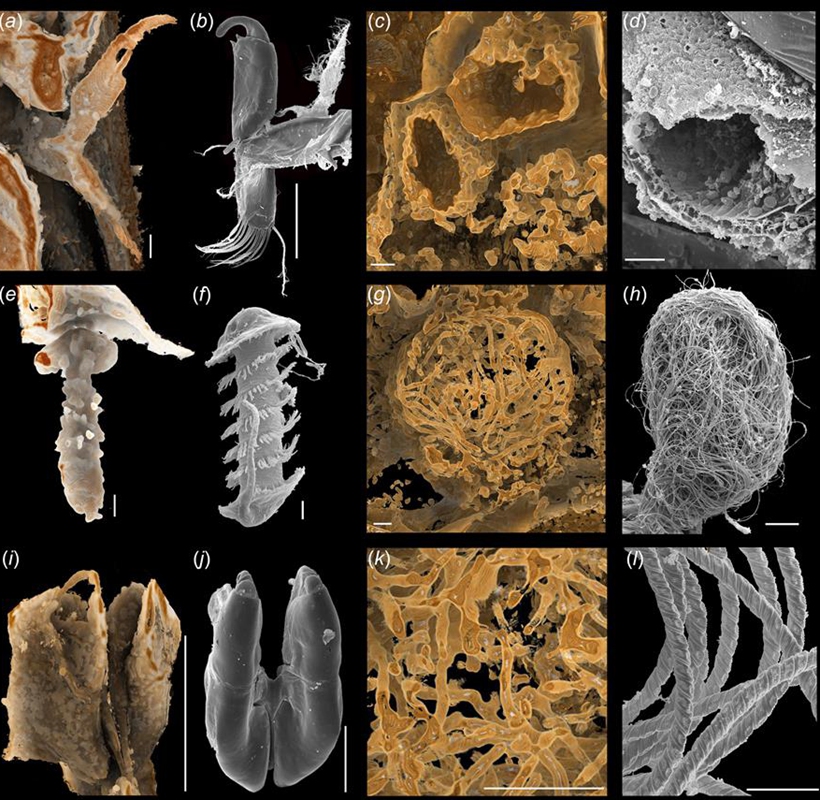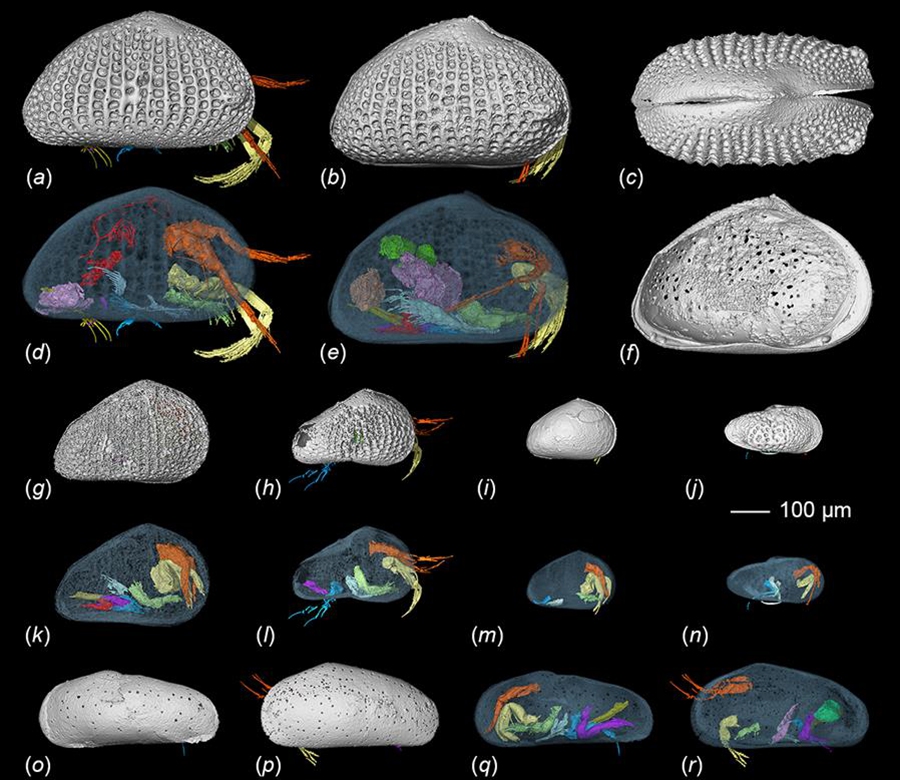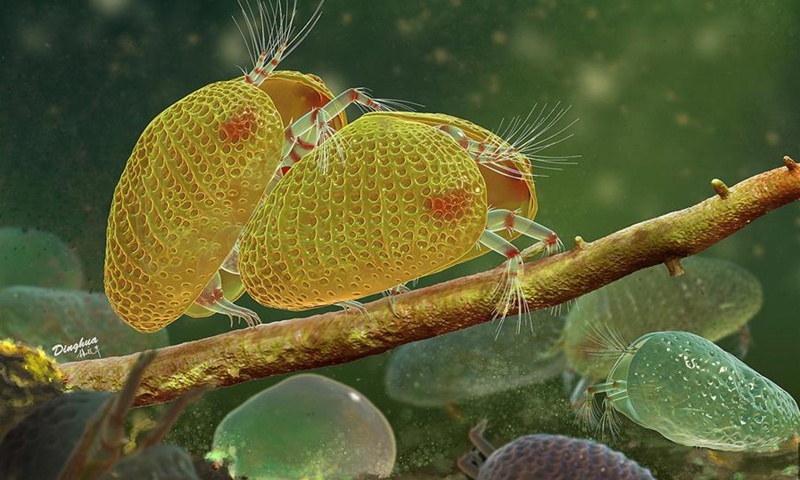Chinese paleontologists discover oldest known animal sperm in Myanmar amber

Combination picture shows the comparison of the sexual reproduction organs of ancient ostracod's fossils (1st and 3rd row) and samples of its modern forms (2nd and 4th row). Chinese paleontologists along with their counterparts from Germany and Britain have discovered the oldest known animal sperm in the world in a piece of amber dating 100 million years ago, according to the Nanjing Institute of Geology and Palaeontology affiliated to the Chinese Academy of Sciences. (Nanjing Institute of Geology and Palaeontology affiliated to the Chinese Academy of Sciences/Handout via Xinhua)
A team of Chinese scientists based in Nanjing, East China's Jiangsu Province, have discovered the world's oldest known animal sperm inside a crustacean that was preserved in amber in Myanmar 100 million years ago.
The fossilized sperm samples are believed to date to the Cretaceous period. This biospecimen was identified inside of an ostracod, a species of crustaceans that have dwelt in aquatic environments for more than 500 million years.
Though the discovered ostracods were diminutive in size, its seed was four times longer than human sperm. Modern ostracods' sperm can be up to 100 times longer than human sperm, leading to them being described as "giant sperm" by researchers.

Picture shows the 3D representation of different ancient ostracods. Chinese paleontologists along with their counterparts from Germany and Britain have discovered the oldest known animal sperm in the world in a piece of amber dating 100 million years ago, according to the Nanjing Institute of Geology and Palaeontology affiliated to the Chinese Academy of Sciences. (Nanjing Institute of Geology and Palaeontology affiliated to the Chinese Academy of Sciences/Handout via Xinhua)
This rare find was first discerned by a Chinese research team led by Dr Wang He of the Chinese Academy of Science in Nanjing. The discovery soon ignited the research interest of paleontologists in the UK and Germany, who proceeded to work together with the Chinese team. Wang collaborated with professors from London and Munich to publish a paper on their findings of the sperm in the renowned British journal Royal Society Proceedings B on Wednesday.
A total of 39 ancient ostracods were discovered in the blob of amber, while the sperm is by far the oldest example of fossil sperm ever found. The researchers also made use of X-ray microscopy technology to create a computer-aided 3D reconstruction image of the creatures in the piece of tree resin. These images revealed giant sperm in a female ostracod's reproductive organs, indicating that the creature had had sex before being trapped in the amber.
"This new discovery is indisputable evidence that giant sperm is at least 100 million years old, and probably much older," Robin Smith, an ostracod expert in Japan, told media after learning of the new scientific discovery.

A drawing shows the representation depicting the mating behavior of ancient ostracods. Chinese paleontologists along with their counterparts from Germany and Britain have discovered the oldest known animal sperm in the world in a piece of amber dating 100 million years ago, according to the Nanjing Institute of Geology and Palaeontology affiliated to the Chinese Academy of Sciences. (Drew by Yang Dinghua of the Nanjing Institute of Geology and Palaeontology affiliated to the Chinese Academy of Sciences/Handout via Xinhua)